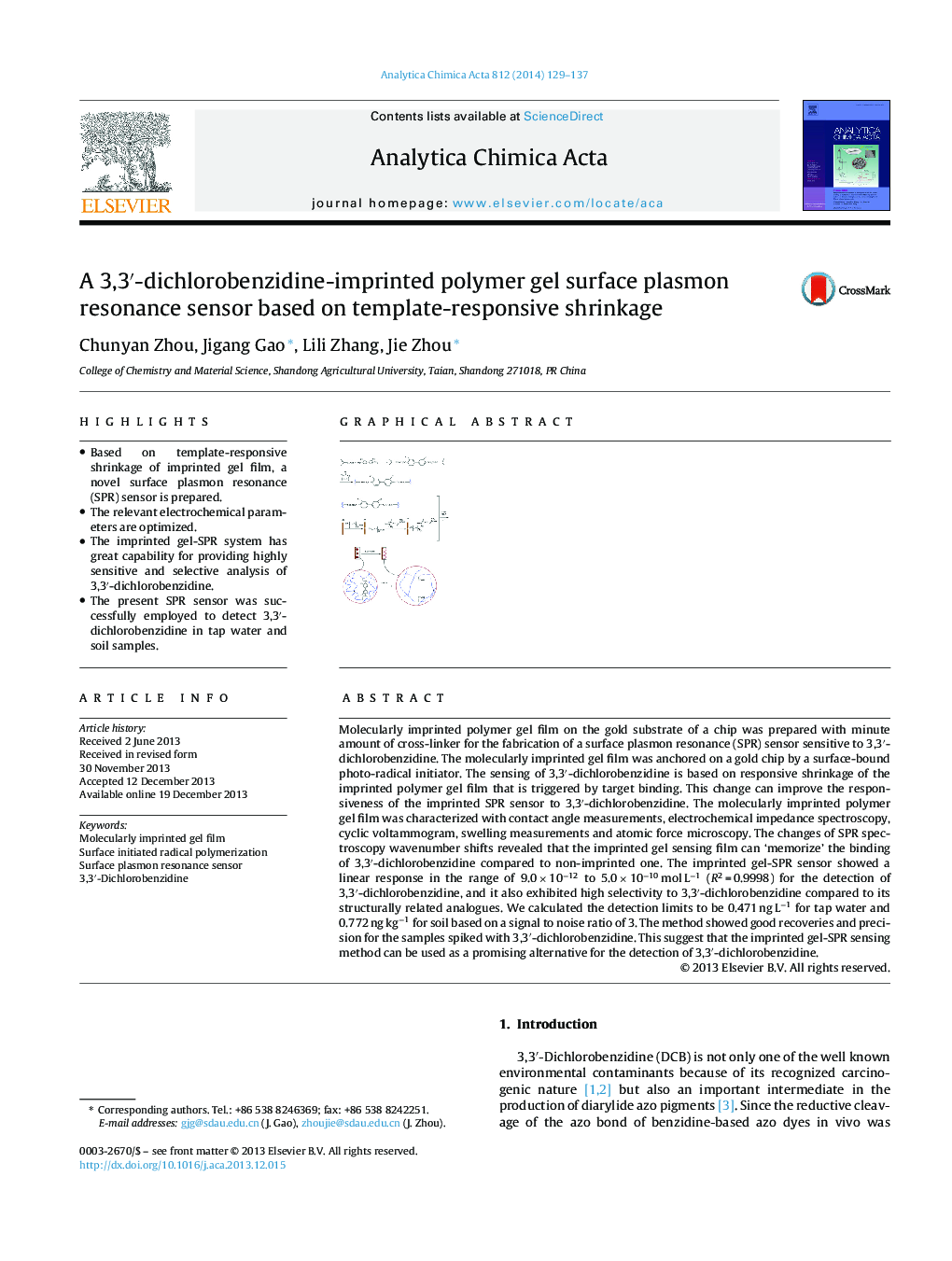| کد مقاله | کد نشریه | سال انتشار | مقاله انگلیسی | نسخه تمام متن |
|---|---|---|---|---|
| 1164143 | 1491020 | 2014 | 9 صفحه PDF | دانلود رایگان |

• Based on template-responsive shrinkage of imprinted gel film, a novel surface plasmon resonance (SPR) sensor is prepared.
• The relevant electrochemical parameters are optimized.
• The imprinted gel-SPR system has great capability for providing highly sensitive and selective analysis of 3,3′-dichlorobenzidine.
• The present SPR sensor was successfully employed to detect 3,3′-dichlorobenzidine in tap water and soil samples.
Molecularly imprinted polymer gel film on the gold substrate of a chip was prepared with minute amount of cross-linker for the fabrication of a surface plasmon resonance (SPR) sensor sensitive to 3,3′-dichlorobenzidine. The molecularly imprinted gel film was anchored on a gold chip by a surface-bound photo-radical initiator. The sensing of 3,3′-dichlorobenzidine is based on responsive shrinkage of the imprinted polymer gel film that is triggered by target binding. This change can improve the responsiveness of the imprinted SPR sensor to 3,3′-dichlorobenzidine. The molecularly imprinted polymer gel film was characterized with contact angle measurements, electrochemical impedance spectroscopy, cyclic voltammogram, swelling measurements and atomic force microscopy. The changes of SPR spectroscopy wavenumber shifts revealed that the imprinted gel sensing film can ‘memorize’ the binding of 3,3′-dichlorobenzidine compared to non-imprinted one. The imprinted gel-SPR sensor showed a linear response in the range of 9.0 × 10−12 to 5.0 × 10−10 mol L−1 (R2 = 0.9998) for the detection of 3,3′-dichlorobenzidine, and it also exhibited high selectivity to 3,3′-dichlorobenzidine compared to its structurally related analogues. We calculated the detection limits to be 0.471 ng L−1 for tap water and 0.772 ng kg−1 for soil based on a signal to noise ratio of 3. The method showed good recoveries and precision for the samples spiked with 3,3′-dichlorobenzidine. This suggest that the imprinted gel-SPR sensing method can be used as a promising alternative for the detection of 3,3′-dichlorobenzidine.
Figure optionsDownload as PowerPoint slide
Journal: Analytica Chimica Acta - Volume 812, 17 February 2014, Pages 129–137